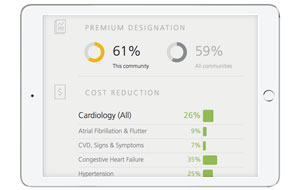Program objective
Improve cost and quality by leveraging existing collaboration.
The challenge
Research shows that collaboration among providers produces better outcomes with lower costs. Informal networks of trust develop between primary care providers and the specialists they tell their patients to see.
Provider network design tools and approaches are limited in their ability to consider real network effects between providers. If we could identify patterns of collaboration and examine their impact, we could potentially leverage them to design better provider networks.
Our role
Clusters of providers were identified based on frequency of collaboration.
Applying social network analysis to claims data, OptumLabs® has developed a way to identify communities of providers who frequently collaborate in the delivery of care. These communities better reflect how care is actually delivered vs. how networks are set up.
These communities become a new unit of measure that we can use to assess the impact of collaboration on cost and quality. In a test market, we have found that these communities deliver ~20% lower cost and have ~10% more premium designated providers in cardiology.

Cost reduction profile shows an example community of providers.

Designing a narrow network using cost, premium designation, and geography
These communities also become a new building block, as opposed to individual providers or entire practices, which we can use to construct narrow, high-performance networks that take advantage of the cost and quality benefit of existing collaboration among providers.
